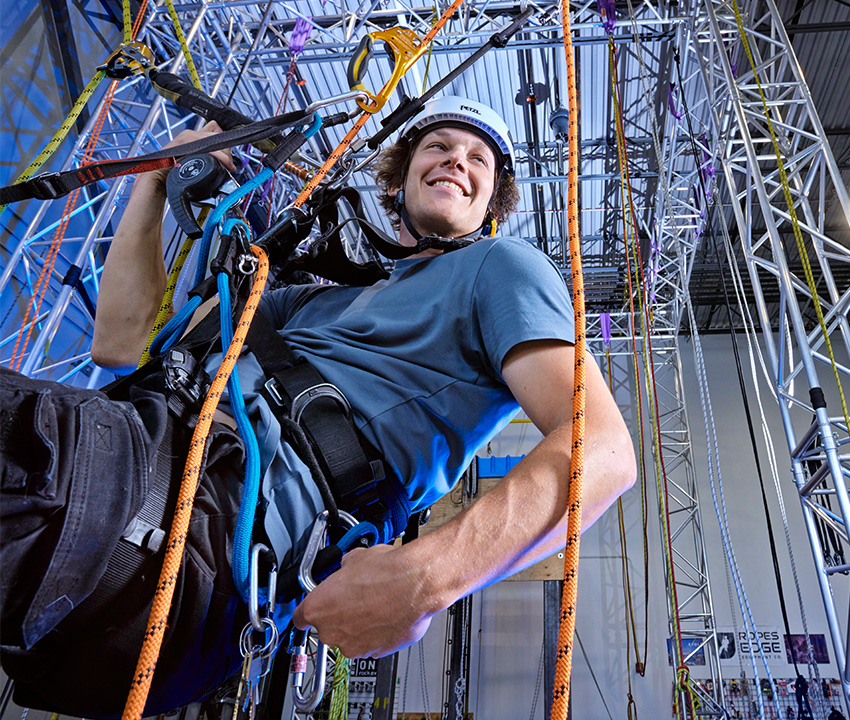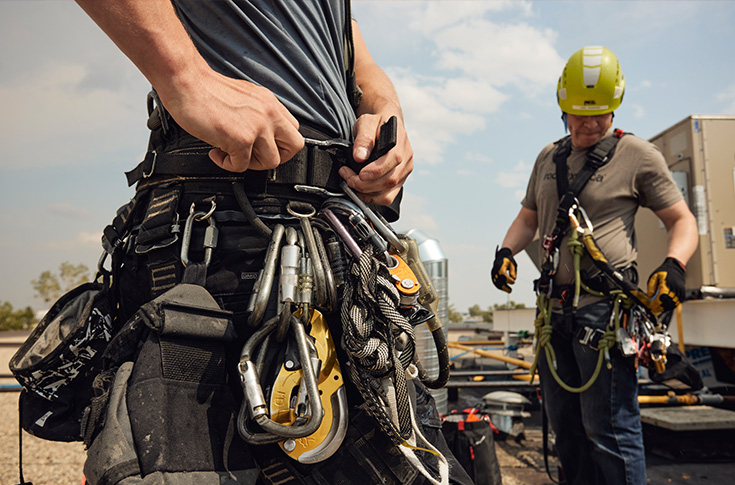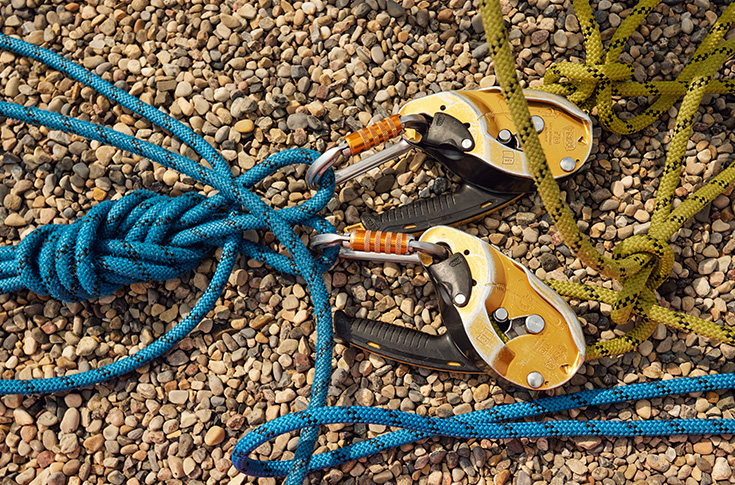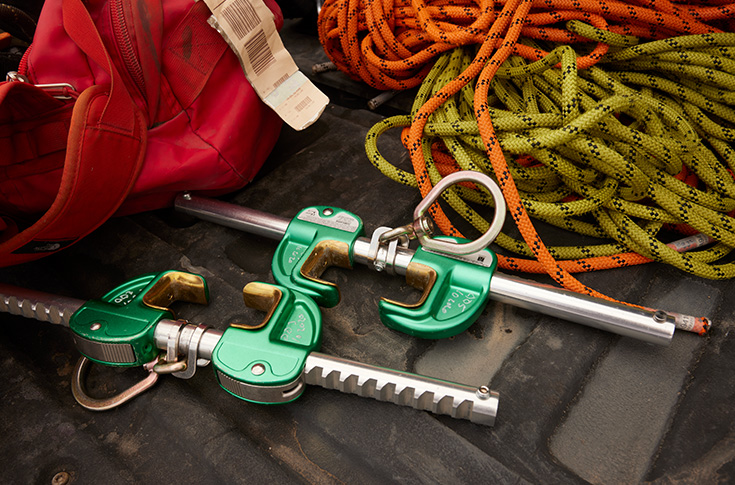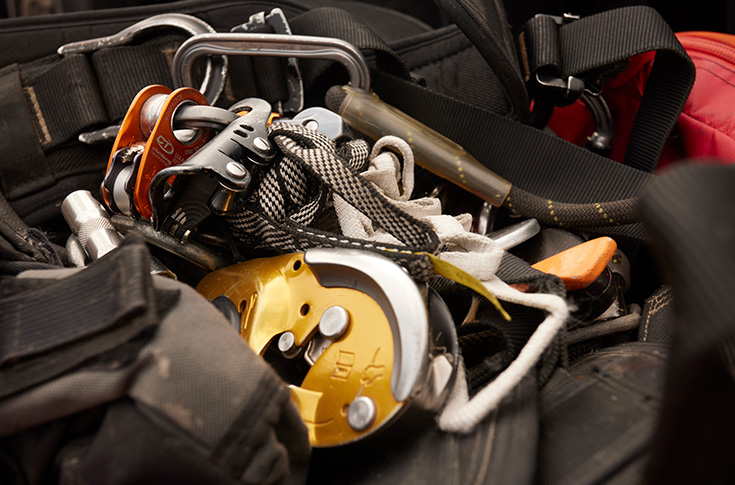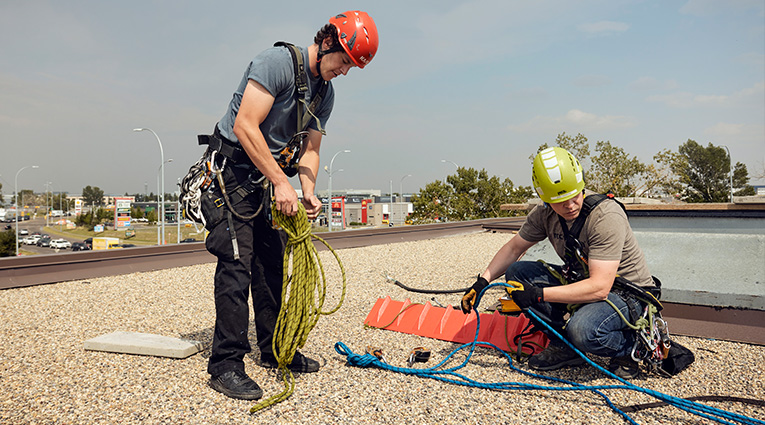When Calgary’s tallest towers need windows installed, repaired or replaced, the job goes to specially trained rope access glaziers like Jimmy Issa (AGLZ ‘24). At 23, he’s a Red Seal glazier ascending to the top of his profession — literally. LINK writer Eric Rosenbaum talks with Issa about this vertigo-inducing career.
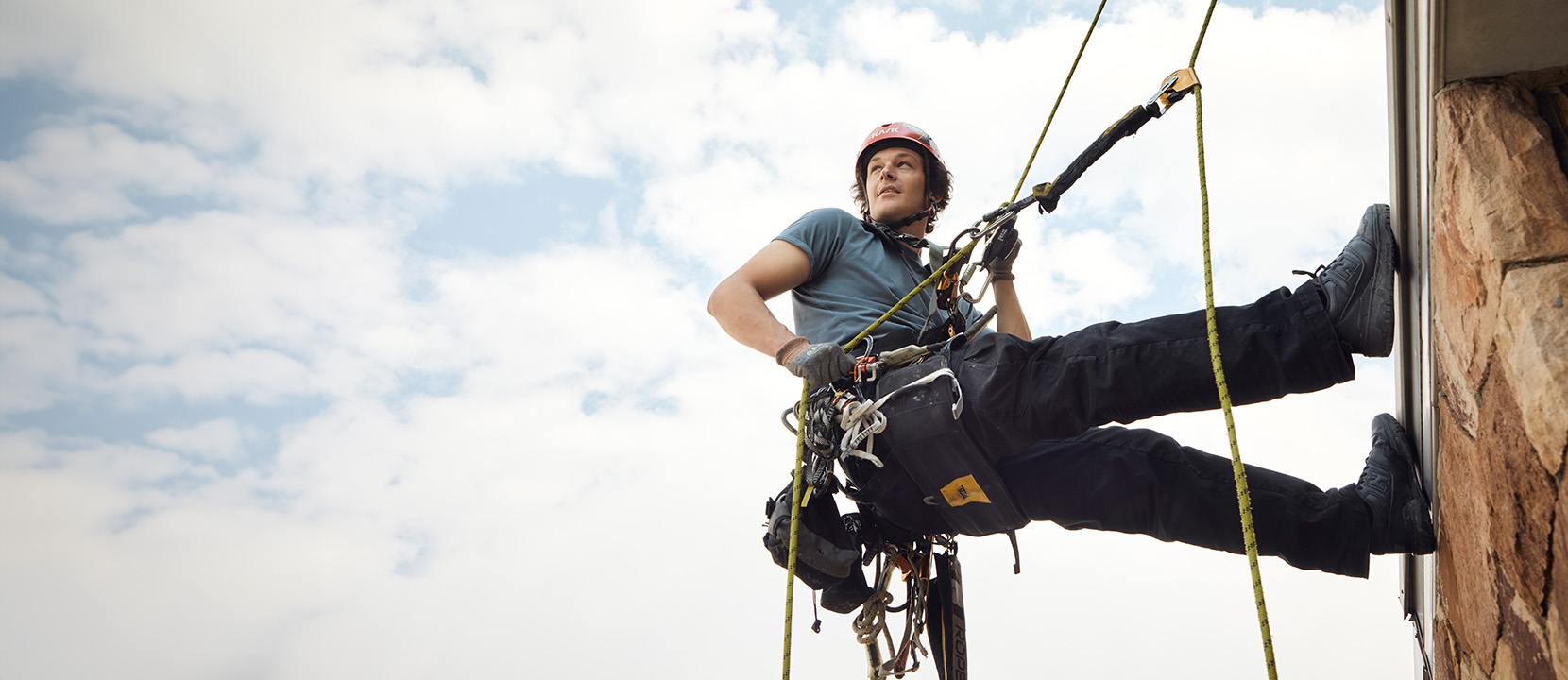
How did you get interested in being a glazier specializing in significant buildings?
I didn’t even know glazier was a trade until I started a summer job after high school. It involved working with windows at Ferguson, a Calgary company specializing in installing curtain walls, windows and skylights for large buildings. At first, I helped assemble window frames in the workshop. Then I began going to work sites helping to install the frames and windows in some of Calgary’s tallest and best-known buildings.
One of the rope crew supervisors found out that I did some recreational rock climbing and asked if I was interested in learning rope work. I said yes. I learned on the job, took courses at SAIT and trained to gain certification from the Society of Professional Rope Access Technicians (SPRAT). I recently reached the highest level, Level III, which means I can supervise a crew.
How tall are the buildings you work on?
My highest rope job so far was a window repair on TELUS Sky, which is 60 storeys tall. I had to rappel off the very top, 729 feet (222.3 m) above the street. Fortunately, in this case, there was a small ledge to stand on, which is part of the structure of the building. Usually there's no ledge and you're completely reliant on the ropes. I was on the ropes for about three hours a day for three days. It was pretty nerve-wracking. You want to keep a healthy amount of fear but not anything that will immobilize you or freeze you up. Another fear on a job like that is dropping something. Although we ensure all the tools are tied off, when you’re up that high, you grip everything a little tighter.
How important is safety in your job?
Safety is extremely important. All my gear is carefully inspected. We use ropes made to hold many times our weight, and we hang them on anchors rated for ten times what they need to support. Our clamps and other equipment are pretty much bombproof.
Do you always work on ropes?
No. Sometimes we use a swing stage, an aluminum kind of walkway with two wires on each side and motors, to ride up and down the exterior of the building. On other jobs we bring in a crane and work off that. On many jobs, members of our crew are inside the structure working with colleagues on the outside. We work together to attach the frame to the structure that will hold the windows. Then we coordinate the attachment of the window. It’s a team job.
I understand you helped build the new BMO Centre at Stampede Park, which is now the biggest convention centre in Western Canada. What were some of the challenges?
We installed all the doors and windows in the BMO. There were about 200 doors, which can be tricky. If you don't get your framing perfectly plumb and square, the door will never fit. But if you build it correctly, the door will go in super easy. Similarly, a massive window in the grand ballroom was also tricky to install. The window itself wasn’t as big a challenge as much as the aluminum frame around it. It tilts out and curves a bit, making it a complicated structure to assemble and install. So long as we assembled it correctly, we knew the window fit perfectly.
What do you like about being a glazier?
My job is interesting and kind of fun. There are always technical problems to solve. And every time those safety checks are complete and I’m ready to go over the edge, I still feel — for lack of a better term — kind of like a badass.
Safety first!
Whether on the job, in training or along a rock face, safety is always a priority. In this picture, Issa works alongside the owner of True Mettle Rope Access Centre, Joel Hawkins (APBP ’04, CAD1 ’14), to prepare for going over the edge of a building in northeast Calgary.
Here is a look at some of the vital safety equipment used by rope access glaziers.
Thank you to Joel Hawkins for giving LINK access for this photo shoot.
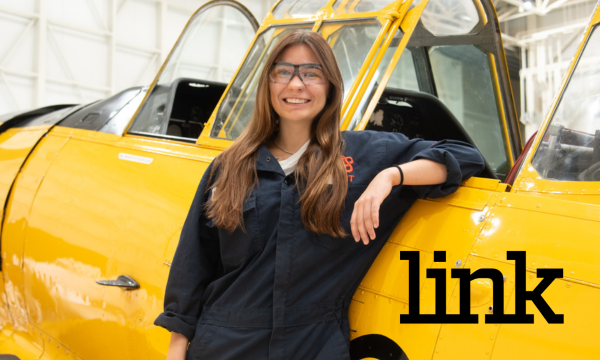
Like what you are reading?
Find more stories from past, present and upcoming issues of LINK magazine!
Oki, Âba wathtech, Danit'ada, Tawnshi, Hello.
SAIT is located on the traditional territories of the Niitsitapi (Blackfoot) and the people of Treaty 7 which includes the Siksika, the Piikani, the Kainai, the Tsuut’ina and the Îyârhe Nakoda of Bearspaw, Chiniki and Goodstoney.
We are situated in an area the Blackfoot tribes traditionally called Moh’kinsstis, where the Bow River meets the Elbow River. We now call it the city of Calgary, which is also home to the Métis Nation of Alberta.
